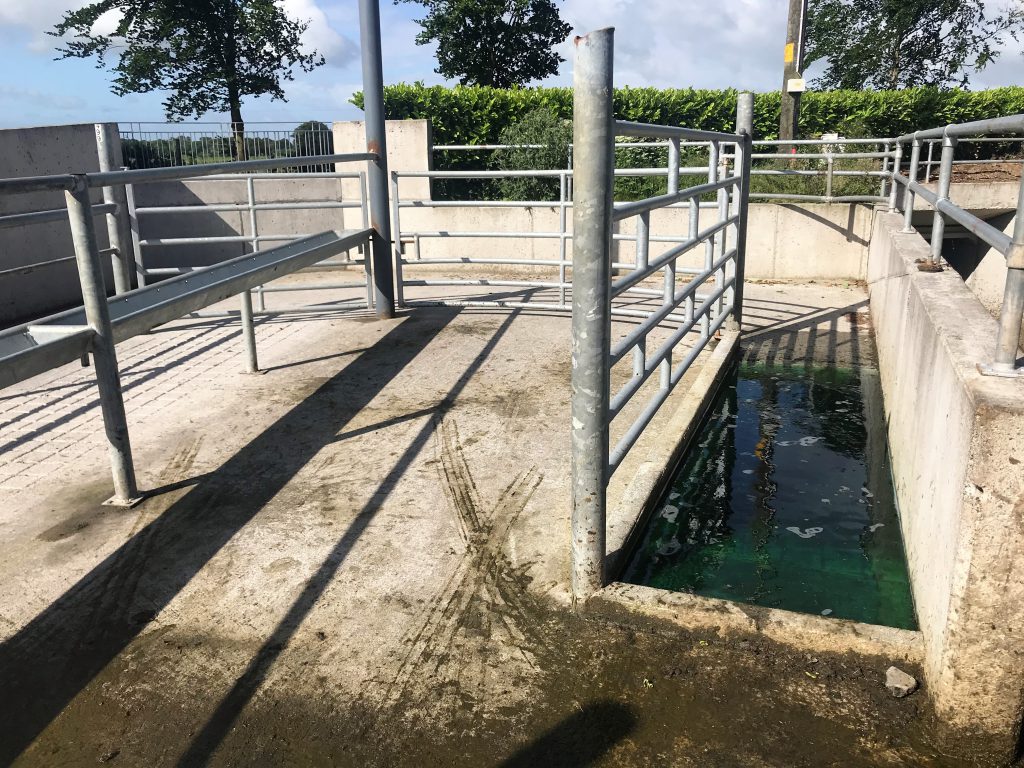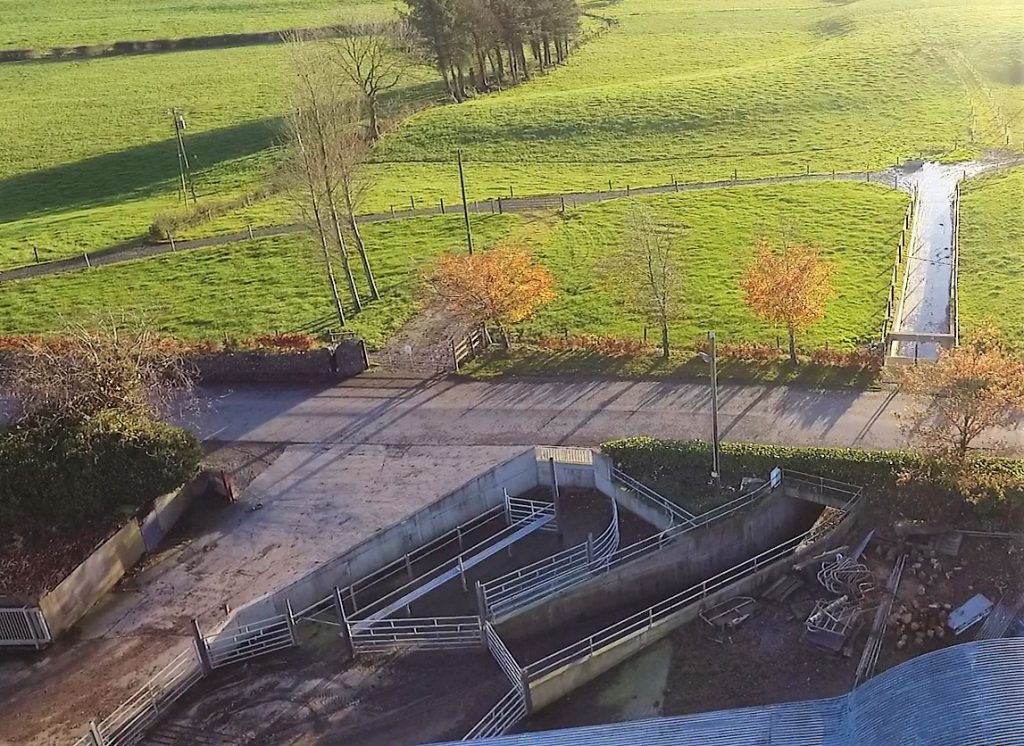In this week’s buildings focus, we visited Mattie and Hugh Gaffney – a father-and-son team – who run a herd of 110 predominately British Friesian cows under a spring-calving system. Eddie, Hugh’s brother, also lends a helping hand whenever he gets the opportunity.
Lameness is a problem in many dairy herds. It is associated with a decrease in milk production, reduced reproductive performance and can increase the chances of a cow being culled.
Hugh understands the importance of allowing his cows to pass through a footbath on regular occasions.
He said: “The longest walk my cows have is about 1km away from the parlour. This would be out to after grass after we cut silage.”
Previously, Hugh used a JFC trough when footbathing his cows. However, he admitted that this system was inaccurate.
“It was very hard to get them to walk through it. We didn’t do it often enough because it was just too much hassle,” he explained.
Recently, the Gaffneys installed a new footbath and crush area in the corner of the yard. After milking, the cows leave the parlour, are directed to the crush area and pass through the footbath.
Measures – such as circular gates – have been put in place to assist cow flow; bluestone is used in the footbath and a power socket is located beside the crush area.
“We had the corner of the yard available just outside the parlour. All the gates match up to assist cow flow and leave it as easy as possible for us.”
Continuing, Hugh said: “If there was enough space, ideally we should have two baths. The first footbath would act as a pre-wash and the second would contain the solution.
“The gates are also circular, which helps keep the cows moving. We use the feed troughs for meal just to entice the cows into it, just to get them used to the idea.
“We also have a crush. We use that for scanning, clipping tails, AI and for reading the cattle after the TB test. We can fit 12-14 cows into it and it’s very handy for scanning,” he added.
Last year, the Gaffneys constructed an impressive calving and cubicle shed, which is tucked away neatly in the corner of the yard.
Also Read: Buildings focus: Inside a €120,000 cubicle and calving shed in Co. WestmeathThe underpass
80% of Hugh’s grazing platform is located on one side of a public road, which is adjacent to the yard. An underpass was installed to make the best use of this ground.
Tamped concrete was used; however, over time, this surface began to wear and Hugh had grooves cut in the concrete.
On this, he said: “I originally put down tamped concrete and it just wore over time with cows walking on it. Washing it and scraping it didn’t help either.
“However, you just have to keep it washed; especially in hot weather, as the dung tends to dry up in the groves,” he added.
With the underpass, Hugh’s cows can go straight out to pasture directly after being milked. Prior to this piece of infrastructure, all cows had to wait to access the grazing platform.
“The road was closed for four days in total during construction. We were lucky that there is another road running parallel, so cars could use that road instead.
“It was a straightforward build. The only thing we had to do was dig around a water main; there was no gas or electricity,” he concluded.
RKC carried out all the ground and concrete work and the precast panels were supplied by Shay Murtagh Precast.






